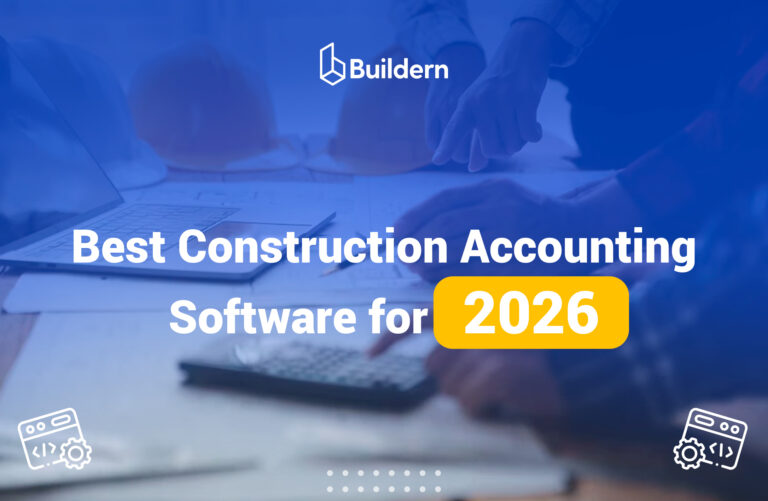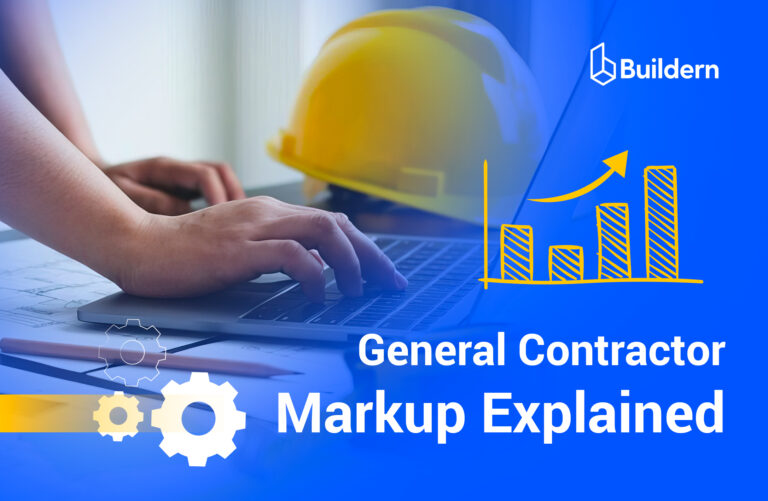Construction Document Management: Tips and Tricks for the Best Workflow
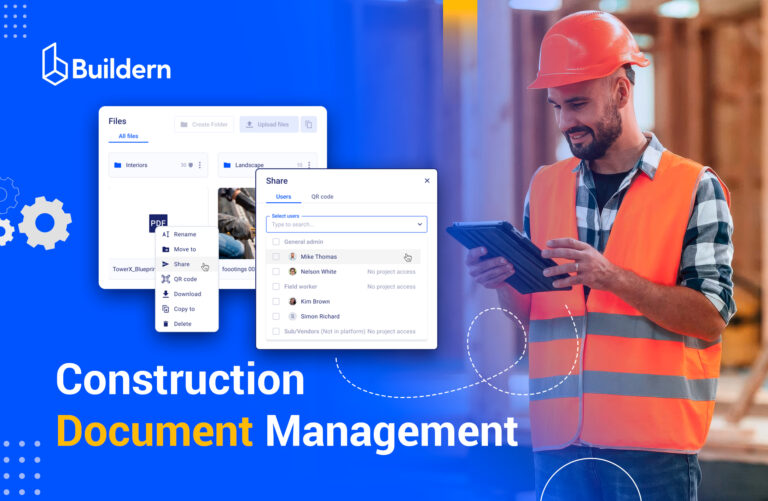
Published October 16, 2023. Updated October 1, 2025
Handling an impressive volume of paperwork requires ultimate dedication and increased proficiency. Regardless of the industry, the process involves organizing and managing everything to ensure a smooth workflow and satisfied clients.
Document management in the construction industry is not an exception. Construction document management affects every aspect of the projects, including drawings, licensing, invoicing, and bidding.
My article will guide you through the key terms and approaches to document management for construction projects. As a bonus tip, we will discuss the benefits of keeping everything on a single platform to avoid bureaucracy.

Table of Contents
- What Is Construction Document Management?
- Why is Document Management Crucial for Workflows?
- 6 Benefits of Upgrading Document Management for Your Business
- Traditional Construction Document Management
- How to Manage Documents with Software?
- 6 Tips for Construction Document Management
- Closing Words
TL;DR
- The process involves organizing and managing all paperwork related to construction projects. It ensures smooth project workflow and client satisfaction.
- Efficient construction document management can streamline workflow, minimize bureaucracy, avoid errors and miscommunication, and ultimately lead to higher client satisfaction.
- A reliable construction management software is a great solution for handling construction document management.
- A consolidated platform allows users to manage all their documents for multiple projects, thereby reducing the complexities and time spent on document management.
What Is Construction Document Management?
In simpler terms, it’s about coordination, communication, efficiency, time, and reducing construction costs. For me, documenting the construction process is a complex and elaborate task because of the multitude of document types you have to deal with.
At its core, document management for construction companies implies organizing all your data in a single place to ensure nothing is left unrecorded. Professionally managing workflow guarantees all documents are safe, accurately structured, and easily accessible by the stakeholders.
Management styles may differ. Some companies keep all files on physical storage, but I prefer digital solutions such as construction management software. In fact, the Construction Document Management Software Market was valued at USD 3.5 billion in 2024 and is expected to increase significantly. This growth shows how crucial digital solutions are becoming for the industry.
Regardless of the approach, as a project manager, my task is to keep the team updated as construction progresses. Everyone, from on-site workers to the architects and the accounting team, needs easy and quick access to updates.
Why is Construction Document Management Crucial for Workflows?
A well-executed document management strategy can play a big role in the competitive construction industry. Construction efficiency is important if you want to scale the workflows.
With proper document management, project managers can maintain a comprehensive overview of all project aspects and reduce the risk of missing vital information.
Besides, communication and document management must be considered as an important duo if the company wants to have transparent financial management. Real-time updates are not only important for dealing with a team but most importantly with a client.
In this case, having a system of showing updates to the client or a so-called client portal can solve many problems.
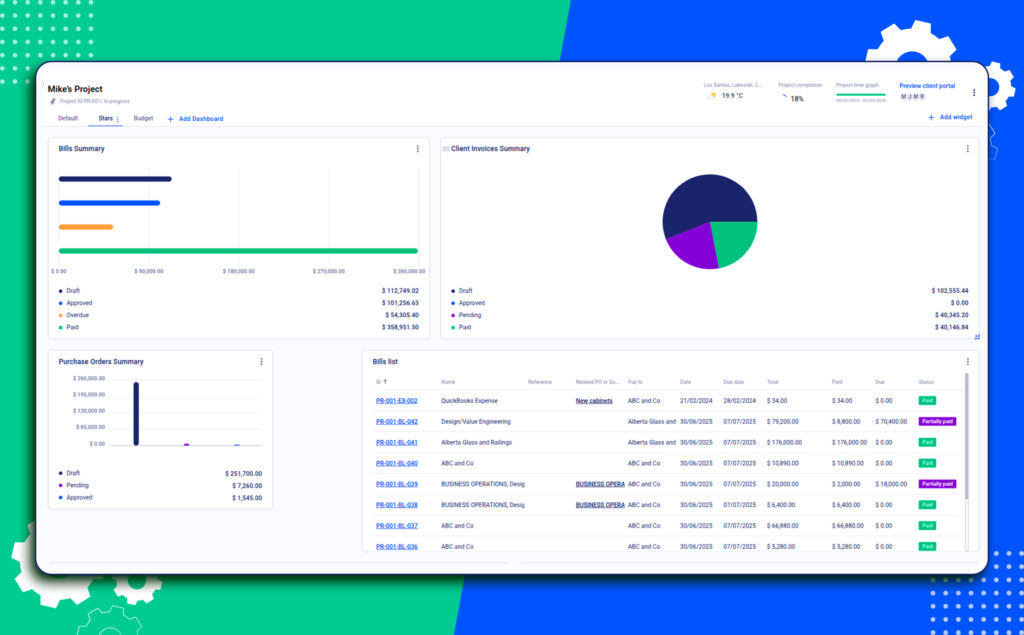
6 Benefits of Upgrading Document Management for Your Business
If keeping everything under control requires so much effort and management skills, why is it a problem for construction companies? Is the deployment of a software solution for construction project management worth it?
Allocating time and human resources to conduct construction document management can be a waste of resources. In reality, having a dedicated staff for papers, licenses, invoice documents, bills, and everything used in construction projects is expensive. Thus, a project manager is better off using digital tools.
An investment in a construction project management solution is vital and can pay off. The benefits of migrating from paper-based documentation to a centralized digital documentation system result in a massive leap in construction efficiency and a positive effect on the bottom line.
Thus, the answer is simple: construction document management brings numerous advantages to the table. Let me list a few to help you navigate this topic better.
Benefit 1: You Have a Reliable Data Source
You are committing to creating a single reference for all construction teams by deploying a document management solution.
Once there is a single data source for your projects, it’s much easier to track and maintain the reliability and integrity of the data it contains. There is an inevitable jump in efficiency and coordination between teams.
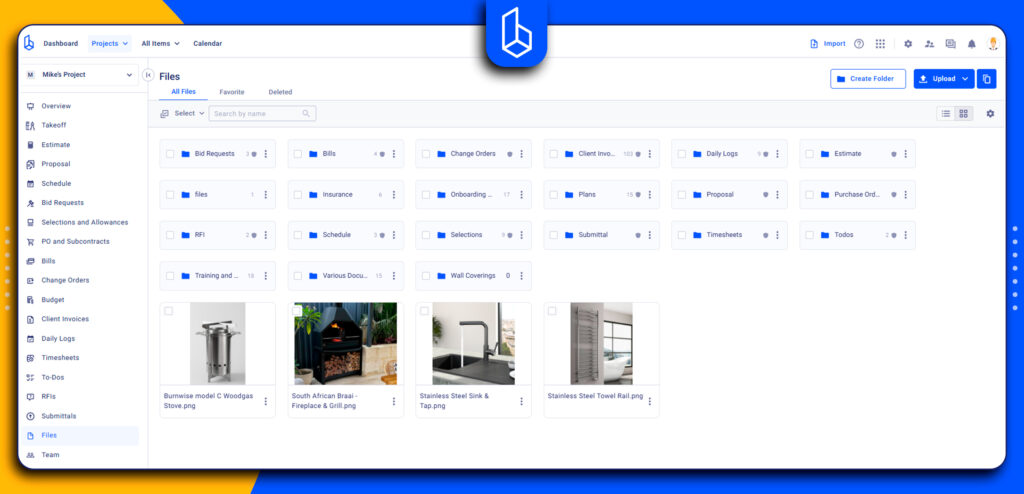
A single data source also allows for greater depth of information and increasingly detailed process tracking, making your business more profitable over time.
Instead, there is much better communication and coordination, and everyone has access to all files, no matter if it is a financial document or a client selection.
Benefit 2: Smooth Communication Between Project Members
Poor communication is one of the primary causes of problems and delays in the construction process. From my experience, it can be clearly avoided if you use the right communication channels, or better to say, you have one platform instead of multiple messengers.
It’s easy to imagine the damage that can be caused when on-site workers do not have the proper documents. The potential for delays, stops, and cost overruns is very high and grows higher as a project progresses.
I try to avoid such issues with digital tools like QR codes. It reduces the need for time-consuming, excessive communication and constant inspections and checks that slow down work.
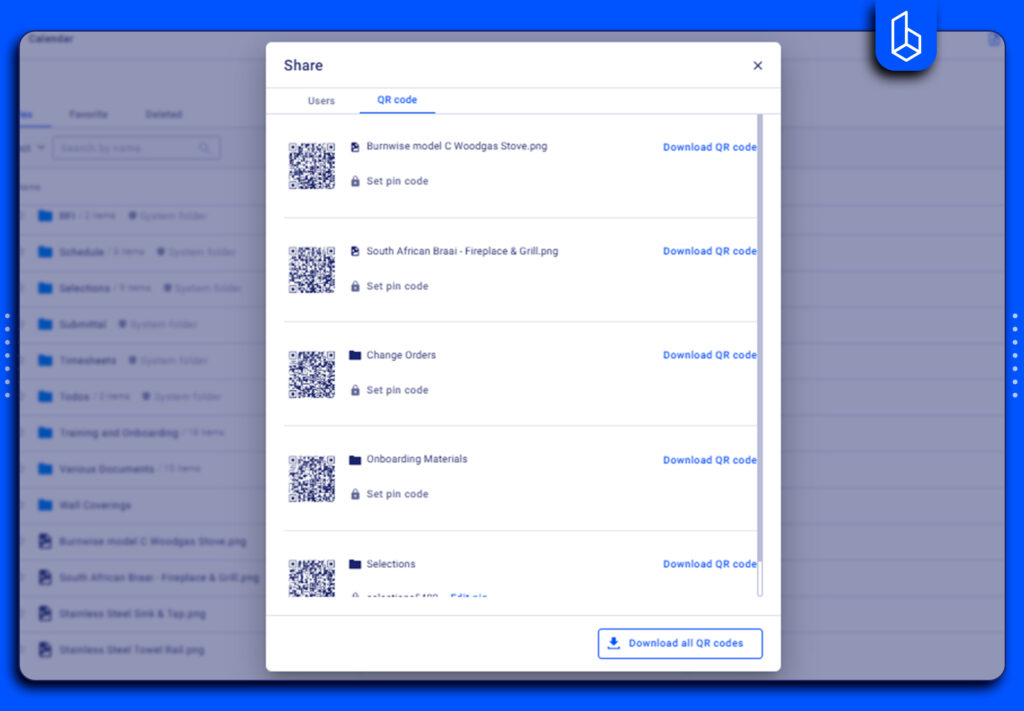
Moreover, smooth communication between team members results in construction
moving forward faster, and updates for clients and investors are taking less time to prepare.
The financial team is always on top of costs and can make necessary changes and adjustments much earlier in the construction process.
Benefit 3: Construction Accounting Has No Disruptions
Construction accounting is usually more complex than accounting for other types of business. There are constant changes due to material costs, delivery schedules, and the pace of construction.
Construction accounting also includes financial tools like progress payments, retainage, and change orders that are usually not seen in more common accounting processes. The numbers involved require extreme accuracy, as the risk of losses can become a heavy burden for the companies and their clients.
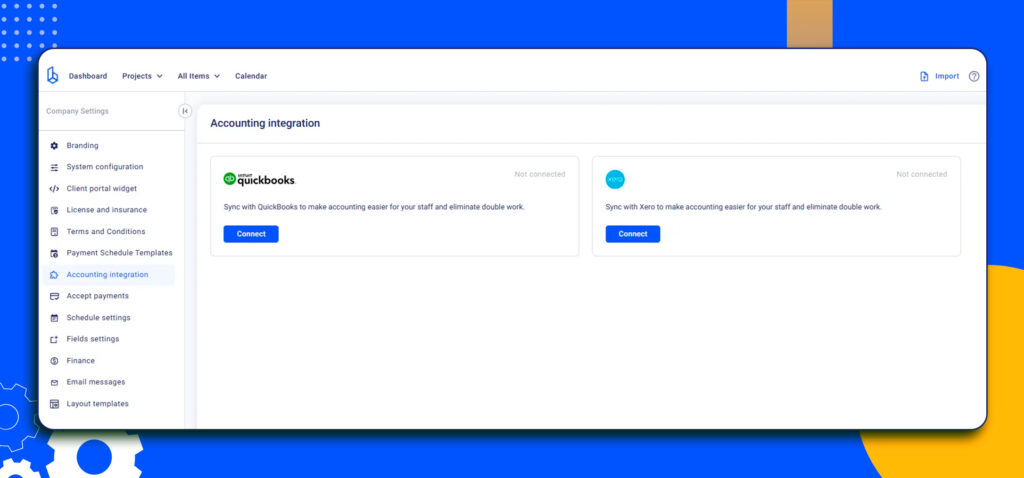
When using construction software, it’s important to have a platform that fully integrates with the major construction accounting platforms, such as Xero and QuickBooks.
Any change to project schedules, material costs, or payroll is automatically reflected in the financial picture of the project.
Benefit 4: It’s Easier to See the Day-to-Day Progress
Construction projects are rarely implemented on time and within the budget. The reason is that there are many unpredictable scenarios due to external factors beyond the builders’ control.
For example, I have multiple times experienced problems because of weather changes, delivery delays, and changes to material costs.
Predictability and control, however, can be maintained with the construction document management software. You’ll start seeing the results once there is a consistent workflow.
Changes reflected in real time in the construction and financial documentation are the key to adequate day-to-day progress. That’s precisely what a professional platform offers.
Benefit 5: Enhanced Quality Control
With a construction project, maintaining a high level of quality is very important. It’s not just about meeting regulatory standards but meeting clients’ expectations and preserving your company’s reputation.
Inefficient document management often leads to quality control issues, as crucial information gets lost or misinterpreted.
Benefit 6: Improved Risk Management
The construction industry inherently involves lots of risks, from site safety hazards to financial uncertainties.
By offering real-time data and easy access to all project documents, software enables project managers to identify and assess potential risks early. In addition to document control, risk management is also improved.

Traditional Construction Document Management
Traditionally, document control relied on pen and paper or simple platforms like Google Docs. However, such platforms cannot satisfy contractors’ needs, specifically when running several projects simultaneously.
Advanced project management tools can simplify and automate any action related to files and documents. Such an approach includes everything from construction scheduling and planning to construction execution in the field.
In the traditional model, much effort is involved in updating construction drawings and blueprints. As the project progresses, processes to monitor and control significantly increase in scope.
Not to mention all the time and effort needed to gather, update, and distribute paperwork through the relevant departments.
Here are the key challenges construction managers face when forced to manage the project with the traditional pen-and-paper process.
#1: Version Confusion
Even an experienced manager working with paper documentation often cannot tell which version of a document they are looking at, if it has been updated, or if it’s a more recent version.
This increases the likelihood of inefficiencies and wrong decisions. Meanwhile, a reliable software platform with document management capabilities can help keep track of all the documents, versions, and updates
#2: Accessibility Issues
Paper documentation is complicated to access, as it’s rarely available when and where it’s needed. Workers on a construction site who may need to access a drawing to solve an unexpected problem are forced to stop work until they can access the documents in the company offices.
Another area for improvement with paper construction documents is that those located outside the construction sites are typically stored in areas with limited access.
Whenever a client or a partnering company decides to access construction documents, they are often locked up in the company’s offices. Construction managers have to meet with them and present the documents physically.
Compare this to having immediate and direct access to all the construction or financial information on site whenever an issue appears.
#3: Wasted Time
Paper document management requires construction managers to have a great deal of time and effort managing files. From collecting them to distributing them, it’s a long and complex process.
Construction managers should take advantage of an excellent opportunity to focus their attention and energy on other important construction management tasks instead.
Updating paper drawings and making equivalent adjustments to financial records requires time and relevant personnel when there are numerous tasks to complete on time.
#4: Higher Risk of Human Error
The risk of human error is very high where paper documentation is involved. From inaccurate data to missing documents, when entering data manually, office workers can inevitably make mistakes.
This is the reason construction managers need a system that minimizes the risk of errors and avoids such problems.
How to Manage Documents with Software?
Construction management software solves the problems mentioned above. A number one advantage of such an approach is that I do not need to go through the numerous folders and older bills to see the previous payment history.
Our platform has everything integrated and kept secure to ensure that both builders and clients enjoy smooth workflows.
Besides, it’s important not only to have financial documents but also visuals attached to change orders or purchase orders from the launch of the project to its end. It’s a great way to track project progress and ensure construction requirements are met.
During the project, especially when a certain milestone is approaching, the owner and subcontractors may ask the general contractor for some files. On software platforms, the process is called request for information (RFI). Approvals and reviews can also be shifted to one platform in this case.
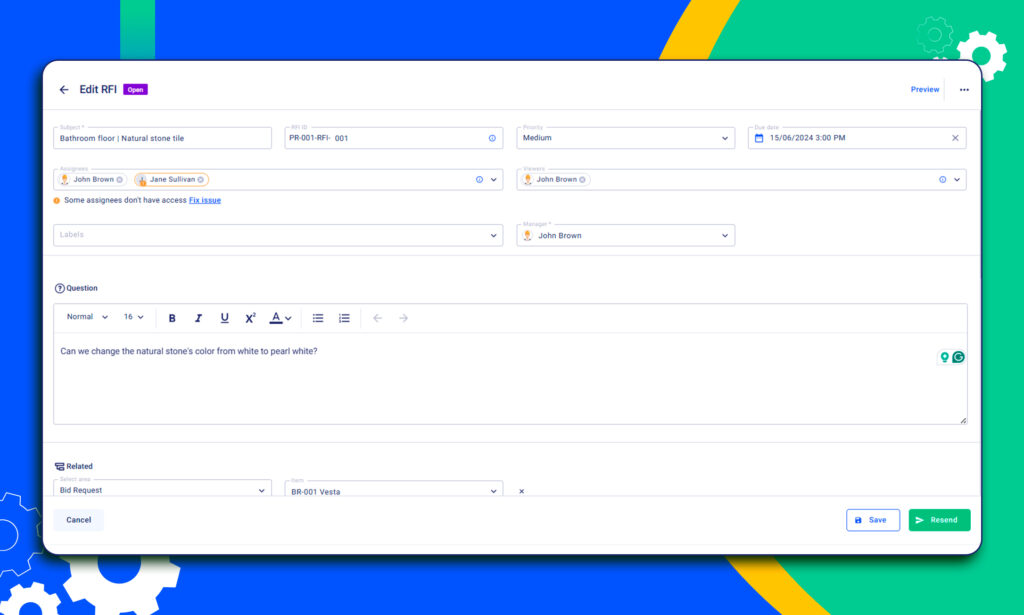
When it comes to commercial construction, submittals, such as drawings, must be approved and kept on one platform.
Everything moves along more smoothly when the information you need is easily accessible from one central location. Based on the roles and permissions, a general contractor, a project manager, and other stakeholders can get access to any file they need.
6 Tips for Construction Document Management
While having a platform to keep everything together is essential for project management, you can also take extra steps to ensure construction goes according to plan.
Tip 1: Identify Gaps
Any investment in improvements or upgrades to your strategy begins with a thorough assessment of your construction company’s needs. It’s important to understand what the gaps are, as they are unique to each company.
Factors affecting the gaps may also include the following:
- Legacy approaches that may still be in place
- Conflicts that emerge over time between the previous and the new policies
- Construction documents that need replacement
- Workflow of the office and on-site crews
From my experience, investing in construction document management will pay off only if implemented consistently.
Tip 2: Analyze the Behavior of Project Stakeholders
Let’s put it straight. Project stakeholders are individuals, vendors, subcontractors, organizations, and other entities interested in the construction project. Stakeholders have different expectations and objectives.
Thus, construction document management solutions must meet their needs and preferences. Everyone involved in the project requires a different approach, but through a unified platform, to minimize the risk of misunderstanding.
Tip 3: Have a Responsible Person for Managing Construction Documentation
Having a project manager to handle tasks related to document control is a must. The construction document manager should be in charge of the digital or paper paperwork.
This person will be responsible for constantly taking action to improve how construction data is recorded and updated. Anyhow, it doesn’t mean all the time is dedicated to papers, and automation plays a key role here.
Tip 4: Choose Software Meeting Your Particular Needs
Choosing the software solution to help you manage construction documentation is one of the vital decisions and critical investments your company will make.
While many offer ease of use, it’s better to ensure the software you choose provides the tools your business needs. Having different tools for document management, scheduling, and estimating is not efficient. Pick the one that has it all.
Tip 5: Automate As Much As Possible
Automation opportunities, first of all, help minimize the risk of errors and save time when dealing with data entry.
A great example is integrating accounting software so that any change can be reflected in a difference in bills of quantities. Moreover, as construction progresses, results can be reflected in estimated timelines and final project costs.
Tip 6: Continuously Test and Improve the Process
Have you implemented any or all of the tips above? The next step is to introduce a process for constantly assessing, testing, improving, and optimizing all the procedures.
Policy adjustments are generally an internal affair. However, every new project will still require adjustments to documentation and reporting for maximum efficiency.
Closing Words
The two core objectives of document management are smooth internal and external cooperation and maximum efficiency. The right investment will deliver on these two goals and simplify the construction process.
Construction software management platforms often bring together essential functions such as invoicing, estimating, billing, and bidding. They also cover project reporting, budgeting, and other financial tasks.
The key is accessibility. Construction project management tools are built with one main goal: to simplify work for everyone involved. They’re designed to connect the right people with the right information.
No matter if you have tech-savvy personnel or not, they can still use most of the platform for collaboration across the entire project team.

